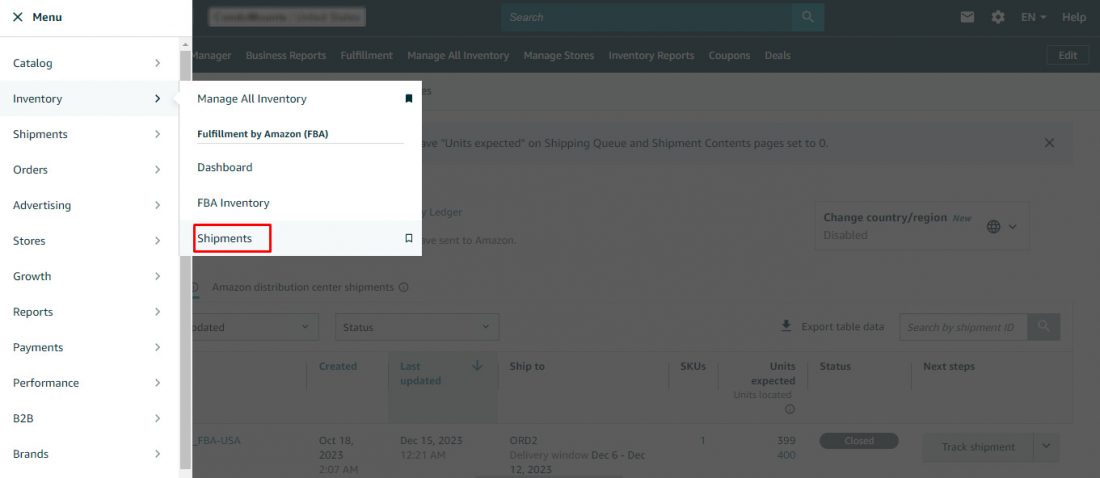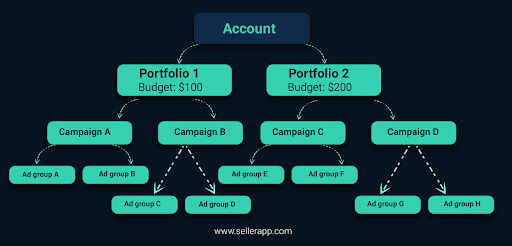Think of the Amazon Partnered Carrier Program as your helpful sidekick that manages all your deliveries. It’s like having a trusted friend that makes shipping simpler and more cost-effective for your business. Let’s explore how this program, can make...
Think of the Amazon Partnered Carrier Program as your helpful sidekick that manages all your deliveries. It’s like having a trusted friend that makes shipping simpler and more cost-effective for your business.
Let’s explore how this program, can make your journey on Amazon smoother and more efficient.
Quick Guide
What is the Amazon Partnered Carrier Program? Amazon Partnered Carrier Options Small Parcel Deliveries Less-Than-Truckload Full-Truckload What are the Benefits of the Program? Amazon Partnered Carrier Program vs. Non-Amazon Partnered Carriers Step-By-Step to Become an Amazon-Partnered Carrier Eligibility to Qualify for the Amazon Partner Carrier Program How to Cancel a Shipment ConclusionWhat is the Amazon Partnered Carrier Program?
The Amazon Partnered Carrier Program is a shipping service designed specifically for Amazon FBA sellers. Amazon provides this service to ship your products efficiently and cheaply.
Using this program, you can access negotiated shipping rates with various carriers, making logistics and order fulfilment easier.
The program is flexible and can meet various shipping needs. It provides options for small parcel deliveries, less-than-truckload (LTL) shipments, and full-truckload (FTL) shipments.
Small parcel deliveries are suitable for lightweight and individual packages, while LTL and FTL options accommodate larger shipments that may not fill an entire truck or require an entire truck, respectively.
Let’s look at these options in more detail in the next section.
Amazon Partnered Carrier Options
Here’s a brief explanation of the different shipping options within the “Amazon Partnered Carrier Options” program:
Small Parcel Deliveries
Small parcel deliveries (SPDs) involve packaging individual units in separate boxes, each labelled for delivery. These shipments, typically smaller in size, are commonly dispatched through carriers such as DHL, UPS, FedEx, or local postal services.
When utilizing a partnered carrier for small-parcel delivery (SPD), there is a shipment limit of 200 boxes per transaction. However, if a non-partnered carrier is chosen for SPD, the shipment limit increases to 500 boxes per transaction. This distinction in limits allows sellers to choose their carriers based on the scale of their small-parcel shipments.
Less-than-truckload (LTL)
LTL shipping is a method where multiple small shipments from different companies are consolidated into one truck. It’s suitable for cargo between 150 and 15,000 pounds that doesn’t require a full truck. Benefits include cost-effectiveness, reduced risk of damage, lower carbon footprint, and flexible scheduling.
Full-Truckload (FTL)
FTL shipping involves filling an entire trailer with a single shipment. It’s faster and more secure than LTL as there are fewer stops. FTL is ideal for larger shipments that can fill a trailer, offering increased efficiency, better visibility, and fewer touchpoints during transit.
What are the benefits of the program?
The Amazon Partnered Carrier Program (PCP) offers several benefits to FBA sellers, including
Discounted Shipping Rates:
This is one of the main advantages of using PCP. Amazon negotiates discounted rates with its partnered carriers, such as UPS, FedEx, and DHL, which can significantly reduce your shipping costs. These rates are often lower than what you would get by booking directly with the carrier.
Convenience:
PCP integrates seamlessly with your Seller Central account. You can purchase shipping labels and track your shipments directly from your account, eliminating the need to manage multiple accounts or log in to different websites.
Fast Transit Times:
Partnered carriers have experience working with Amazon and are familiar with its fulfilment centres. This means they can typically deliver your shipments faster than non-partnered carriers.
Automated Tracking:
PCP provides real-time tracking for your shipments, so you can always see where they are and when they are expected to arrive.
Simplified Labeling:
When shipping with PCP, you only need to create one label for your entire shipment. This eliminates the need to label individual boxes, saving you time and effort.
Pickup and Delivery:
Partnered carriers offer pickup and delivery services, making shipping your inventory to Amazon even easier. You can schedule a pickup time that works for you, and the carrier will come to your location to collect your shipment.
Amazon Partnered Carrier Program vs. Non-Amazon Partnered Carriers
| Cost and Convenience | Competitive rates and deep shipping discounts | Broader carrier selection for more negotiation possibilities |
| Streamlined shipping process for convenience | Greater autonomy in choosing carriers | |
| Faster delivery times, waived storage, and liquidation fees | ||
| Delivery Policy | Ensures shipments are delivered within a specific timeframe | Variable delivery options depending on the carrier chosen |
| Flexible delivery options based on needs and preferences | May require independent planning for delivery timelines | |
| Impact on Profitability | Significant cost savings on shipping fees for FBA sellers | Negotiation potential for customized deals with carriers |
| Optimization of business operations for higher profits | Flexibile, but potentially higher shipping costs |
Step-By-Step to Become an Amazon-Partnered Carrier
To initiate your Amazon Carrier service through the Amazon Partnered Carrier Program, follow these steps:
Log in to your Seller Central account. Navigate to the “Inventory” section and select “FBA Shipments.” Here, you can view your existing shipment list or create a new one. Choose an unsent parcel and click on “Prepare shipment.” In the “Delivery Service” section, ensure you select “Amazon or partnered carrier” for Small Parcel Deliveries (SPD) or “Amazon Partnered Carrier” for Less-Than-Truckload (LTL) or Full-Truckload (FTL).
Provide the necessary details for your shipment, including dimensions, weight, shipment method, address, and destination.
Click on “Calculate” to assess the shipping costs. Review and accept the estimated delivery charges by clicking “Accept charges.”
Download the shipping labels and print them. Adhere the labels to your parcels, as Amazon requires this for verification.
Check the Amazon Partnered Carrier list and contact your selected carrier to schedule a pick-up.
Before proceeding, double-check that all shipment information is accurate, including the tracking number, Amazon’s reference ID, carrier status, and warehouse address. Any errors could result in noncompliance fees from Amazon.
Choose an unsent parcel and click on “Prepare shipment.” In the “Delivery Service” section, ensure you select “Amazon or partnered carrier” for Small Parcel Deliveries (SPD) or “Amazon Partnered Carrier” for Less-Than-Truckload (LTL) or Full-Truckload (FTL).
Provide the necessary details for your shipment, including dimensions, weight, shipment method, address, and destination.
Click on “Calculate” to assess the shipping costs. Review and accept the estimated delivery charges by clicking “Accept charges.”
Download the shipping labels and print them. Adhere the labels to your parcels, as Amazon requires this for verification.
Check the Amazon Partnered Carrier list and contact your selected carrier to schedule a pick-up.
Before proceeding, double-check that all shipment information is accurate, including the tracking number, Amazon’s reference ID, carrier status, and warehouse address. Any errors could result in noncompliance fees from Amazon.
By following these steps, you can seamlessly integrate your shipping business with the Amazon Partnered Carrier Program, ensuring efficient and compliant FBA shipments.
Eligibility to Qualify for the Amazon Partner Carrier Program
To participate in PCP, you must be an active Amazon FBA seller with an eligible FBA shipment. You also need to be located in the USA or in any one of the countries where PCP is available. It’s essential to meet specific criteria and comply with Amazon’s packaging and labelling standards.
How to Cancel a Shipment
Cancelling Small Parcel Delivery (SPD) shipments can be done within a 24-hour window. For Less-Than-Truckload (LTL) and Full-Truckload (FTL) carriers, the cancellation timeframe is within 1 hour after approving the estimated fees.
To cancel a shipment:
Navigate to the shipping queue and locate the specific shipment. Click on “Work on shipment” and select “Provide details.” Choose “Void charges.”It’s important to note that cancelling a shipment doesn’t automatically waive the fees.
To ensure charges won’t apply and no pickup is scheduled, follow the provided steps diligently. This proactive approach is crucial for managing cancellations effectively within the Amazon Partnered Carrier Program.
Conclusion
The Amazon Partnered Carrier Program streamlines shipping for Amazon sellers, providing competitive rates and convenient processes. It’s a valuable resource for efficient and cost-effective logistics.
The post A Seller’s Guide to Enrolling in Amazon Partnered Carrier Program appeared first on SellerApp Blog.









